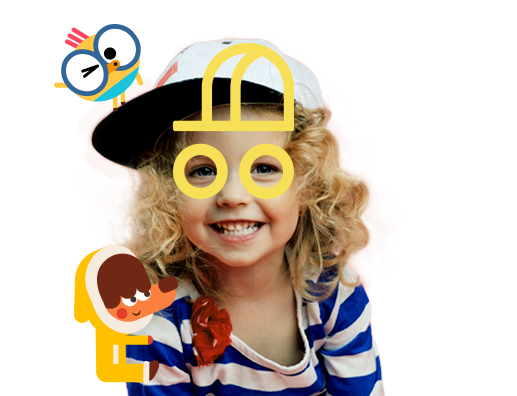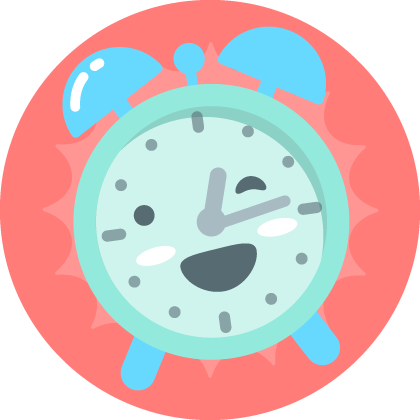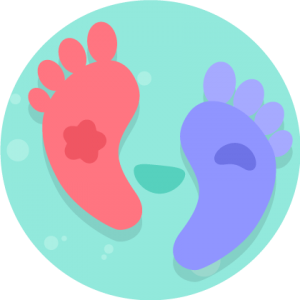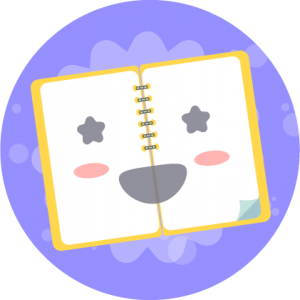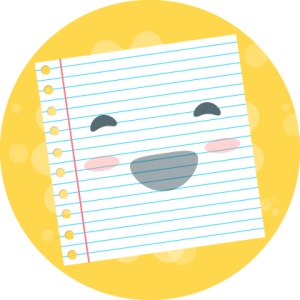“What time is it?” This -without a doubt- is one the most common questions in the English language, and that’s because knowing the correct time is important to keep an organized scheduled. By knowing how to tell the time, a person can make sure to catch the bus at the right time or to determine if he or she will be able to attend that special event that’s being planned without a problem. For children, learning “ what’s the time” is one their milestones as they grow up, it allows them to be more independent, and to be able to have more control over their lives.
For younger children, telling the time can be a complex task, since it involves having some previous knowledge like identifying the numbers in English to be able to tell time correctly, and it also varies from reading an analog clock to reading a digital one. However, with lots of patience and practice, the little ones will be able to learn to read a clock in no time, of course, always with the help of parents, family, and teachers.
Time in English: how to express it.
There are several ways to express time in English. The most common and popular one is to talk about the hours, this means that the person states what time it is by saying the hour of the day, however, depending on what time is it, there are some different ways that this can be done. For a more general approach, a person could express time by talking about the time of the day when the action is taking place, or for a formal approach, a person can use military time.
As an introduction to this topic, it would be useful for your child to learn that a day is divided into twenty-four hours, and each hour divides into sixty minutes. This is a general rule, and it’s the same around the globe.
So, to start reading the time it’s important to know that when a clock reads 08:46, then the first number refers to the hours (eight), and the second refers to the minutes (forty-six). Now, let’s check the most common ways of telling time.
Talking about the hours of the day
This is the most used way of telling time, and it consists of dividing the 24-hour-day into two parts of 12 hours each, these are: a.m. hours (from the Latin ante meridiem, which means ‘before midday’) and are used when talking about mornings, and p.m.hours (post meridiem, or after midday), which are used to refer to the evening part of the day.
O’clock

This expression is used to refer to the hour as a full hour, without including the minutes, for example, “It’s three o’clock.” When talking about full hours is sometimes useful to use a.m. or p.m. to clarify if it’s in the morning or in the evening when the context is not clear enough, in these cases, there’s no need to write “o’clock”.
The plane arrives on Saturday, at 3 o’clock.
Military time
This way of expressing time consists of expressing the hours in a day with the numbers from 0 to 24, so, midnight would be 0:00, while noon would be 12:00.
Expressing minutes
There are two ways to talk about minutes when telling time in English. One is reading all the numbers, first the ones that represent the hour, and then the minutes, for example, 10:06 would be “ten oh six” (notice that when talking about minutes that go from 01 to 09, the zero it’s always expressed as “oh”, which is another way of referring to this number), and the hour 06:36 would be “six thirty-six”.
Some examples of this way of talking about the hour are:
11:42 – eleven forty-two
12:02 – twelve oh two
08:16 – eight sixteen
However, most of the time, minutes are not expressed individually but in groups.
Half past

This expression is used to express that half the minutes (thirty) in the hour have already passed, so 03:30 would be “half past three.”
Quarter past/quarter to
These expressions are used to talk about those times when fifteen minutes after an hour have passed (quarter past), and also when there are fifteen minutes left in an hour (quarter to).

02:45 – a quarter to three

03:15 – a quarter past three
To / till / until / past
To is used when talking about the minutes until a certain hour. For example, if it’s 09:48, then it’s read as “twelve minutes to ten.”Till and Until are used when talking about the time or hours left until something happens, but the former is considered more informal. This way, a person can say “two hours till bedtime”.

It’s twenty five minutes to one. / Twenty five minutes until one.

It’s twenty five minutes past eleven.
Times of the day
Even though the most precise when expressing time is to tell the hour as it is, there is another way that’s also of common use, that is to tell the time referring to the time of the day. This is a general approach of time, and it’s not specific. It’s mainly used when the exact hour and minutes are not so important.
sunrise
It’s the time of the day when the sun comes out, and which marks the start of the day.
When I have classes, I always wake up at sunrise.
morning
Morning is the time of the day that comes after sunrise, and before noon. Usually, it’s from 6 a.m. to 12 p.m.
On mornings, I always go to school.
noon / midday
Noon, or midday, refers to the middle of the day. Usually, noon is used to talk about 12 p.m. o’clock, while midday refers more of a time that goes from 11 a.m. to 1 p.m.
Julia and her mom always have lunch together at noon.
afternoon
The afternoon is that time of the day that comes after midday. It’s usually after 1 p.m. or 2 p.m. and lasts until about 6 p.m.
Sandra will organize her toys this afternoon.”
sunset
As the name says, it’s the time of the day when the sun sets and everything starts to get dark. Usually, around 6 p.m.
On mornings, I always go to school.
evening
The evening starts after sunset, and it continues approximately until 9 p.m. or 10 p.m.
We’re going to watch a movie this evening.
night
Even though that night is considered the period of time between sunset and sunrise, usually it’s used to refer to the hours between 10 p.m. and sunrise.
Sarah goes to sleep early at night.
midnight
This word refers to 12:00 at night, or in military hours, 24 h. Usually is also used to talk about times close to this hour.
The moon was lovely at midnight.
How to ask about the time
? Excuse me, what time is it?
It’s three o’clock.
? What time does the theater open?
The theater opens at 4 p.m.
? When are we having lunch?
We’ll have lunch after school, at 2 p.m.
? Do you have the time, please?
Yes, it’s a quarter to two.
? What time do you get up?
I get up at half past six every morning.
